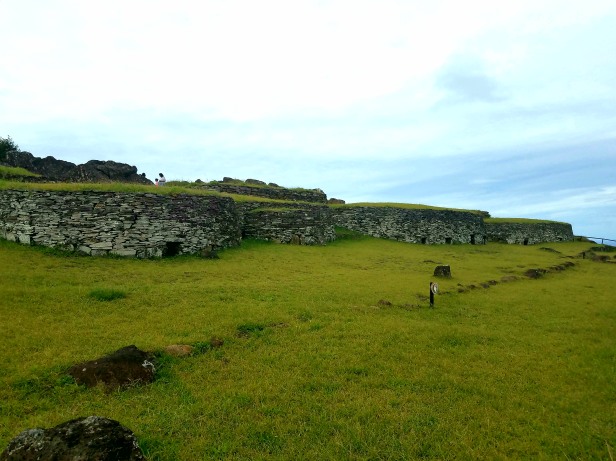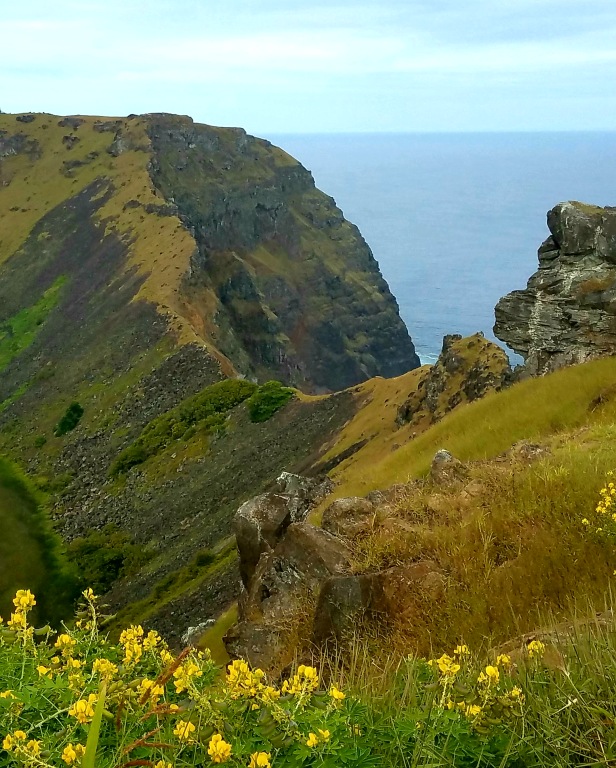Easter Island is famous for its large stone statues called moai. Moai (like toy) represented deified ancestors and were believed to possess mystical qualities known as mana. The population expended much energy and resources carving, moving, and erecting hundreds of them over several centuries. In 1722, when Dutch explorer Roeggeveen became the first European to encounter Easter Island, moai were in place on the ahus where they were erected.
In 1774, British explorer James Cook visited Easter Island. At that time, he reported that the moai looked neglected and some had fallen over. An expedition in 1838 was the last to report seeing standing moai. By the 1860s no upright moai remained, and the people of Rapa Nui were practicing a wierd cult and social system based on the birdman competition. The birdman cult was one of the strange things about Easter Island that made me think about stuff I usually don’t think about.
Other posts about this Easter Island trip:
Priority Pass Lounge Review – Primeclass Pacifico Condor Lounge Santiago, Chile
Flying the Great White Whale – LATAM Stealth 777-200 Santiago to Isla de Pascua, Chile
This Trip To Easter Island Really Got Me thinking Part 1 – Chez Jerome Easter Island B & B Review
This Trip To Easter Island Really Got Me Thinking Part 2- Hanging Out in Hanga Roa
This Trip To Easter Island Really Got Me Thinking PART 3 – Rapa Nui National Park
So What Is The Birdman Culture?

The Birdman cult was centered on a competition to see who could be the first to obtain and return with an egg of the migrating sooty terns that nested on Motu Nui, a small islet just off the coast. The competition started from and returned to Orongo, a village of 53 stone huts overlooking the Pacific from the rim of Rano Kau.

The important people from each village lived in the shelters and watched the competition unfold. The winning chief and village received special honors and privileges for the next year. Basing an entire society on the outcome of what is essentially a game show is strange to say the least.

Each village leader selected a champion to take part in the competition. If the champion won, the leader who selected him became the birdman for the year.

From Orongo, the competitors were required to climb down a shear 1,000′ cliff, swim to Motu Nui, and wait for the terns to arrive and nest. Competitors frequently died from slipping or being pushed from the cliffs by other participants. There was no referee and no such thing as a personal foul or red card. Sharks preyed on swimmers who were often bleeding from cuts sustained in the climb.

The competitor who recovered the first egg would go to the highest point on Moto Nui and call out the name of the chief he was competing for. The call would be relayed to Orongo where the winning leader would shave his head and paint it red or white. The other competitors collectively swam back to Orongo while the one with the egg stayed on Mto Nui to fast before swimming back and presenting the egg to his patron.

That king became the birdman for the year. Among other honors and privileges he received gifts of food and other tributes and his village had sole rights to collect that season’s harvest of wild bird eggs and fledglings from Motu Nui.
The Birdman cult was suppressed by Christian missionaries in the 1860s.

The origin of the cult and the period of time during which it was practiced are uncertain, as is whether the cult replaced the preceding Moai-based religion or had co-existed with it. There was only one moai at Orongo. It had several birdman related carvings on its back. That moai was moved to the British Museum in London. The Rappa Nui and Chile would like to see it returned.
Overall Impression
The isolation of the society on Easter Island led to the development a very unique culture. Moai and the birdman cult are the best examples. What caused the Rapa Nui to reject the system the maoi represented and to develop the birdman cult? That was one of the questions about Easter Island that really got me thinking. That thinking is the subject of an upcoming post. What do you think of the birdman cult or the civilization that developed on Rapa Nui?

Reblogged this on Vijayagiri views.
LikeLiked by 1 person
Thanks for sharing this post!
LikeLike
Beautiful places!
LikeLiked by 1 person
Great post – I’ve never thought much about Easter Island it looks so beautiful
LikeLiked by 1 person
Easter Island has some striking scenery. The island is so small and remote it is easy to overlook.
LikeLike
Interesting. Must have been terrifying being in that competition. That Petroglyph is very fascinating.
That Petroglyph is very fascinating.
LikeLiked by 1 person